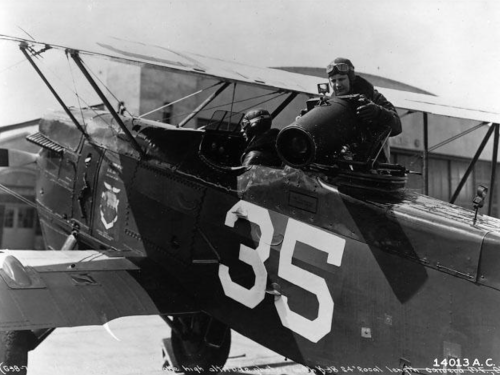

Stories of daring, stories of technological feats, stories of prevailing against the odds ... these are the stories we tell at the National Air and Space Museum. Dive in to the stories below to discover, learn, and be inspired.
Showing 91 - 100 of 701

August 10, 2023
For Latino Futurist artists, drawing on the past is key to creating futures that connect heritage, experience, and indigeneity to the present and future in constantly circling time.
Para los artistas futuristas latinos, recurrir al pasado es clave para crear futuros que conecten el legado, la experiencia y la indigenidad con el presente y el futuro en un constante círculo temporal.

July 27, 2023
The science done at Arecibo Observatory was and continues to be incredibly important, and having the observatory in Puerto Rico is a point of pride for locals.
a ciencia hecha en el Observatorio de Arecibo fue y continúa siendo increíblemente importante, y tener el Observatorio en Puerto Rico es un motivo de orgullo para los locales.

July 25, 2023
Before Patrick Leonini was a museum specialist for the National Air and Space Museum in the Photography department, he spent 24 years in the United States Air Force. He reflects on his career experiences in the military as an airfield manager, working in and around aircraft, crews, and ground support personnel.

July 13, 2023
In the early 1960s, thousands of unaccompanied children fled Cuba by plane, moving to the United States on visa waivers from the U.S. government.
Son los principios de la década de 1960 en Cuba, miles de niños sin acompañante huyeron de Cuba en avión, mudándose a los Estados Unidos con exenciones de visa del Gobierno de los Estados Unidos.

June 23, 2023
During World War I, a new form of espionage took flight—literally. Photography from aircraft was introduced as a new way to spy.

June 20, 2023
Visitors to the National Air and Space Museum can see a DC-3 that flew more than 56,700 hours for Eastern Air Lines.

June 18, 2023
A story examining the lore and enduring appeal of taildraggers.

June 17, 2023
If you think bungee jumping is scary, look at what Joe Kittinger did.

June 17, 2023
The Pioneers of Flight gallery preview.

June 16, 2023
Throughout his career, Museum curator Ron Davies collected everything--tickets, timetables, brochures, photographs, public relations releases, and baggage labels—from airlines around the world from his travels. He encouraged his friends and colleagues to save their materials for him. He wrote to airlines and aircraft manufacturers soliciting information. This material, totaling over 62 cubic feet, became the basis for the R. E. G. (Ron) Davies Air Transport Collection at the National Air and Space Museum Archives.